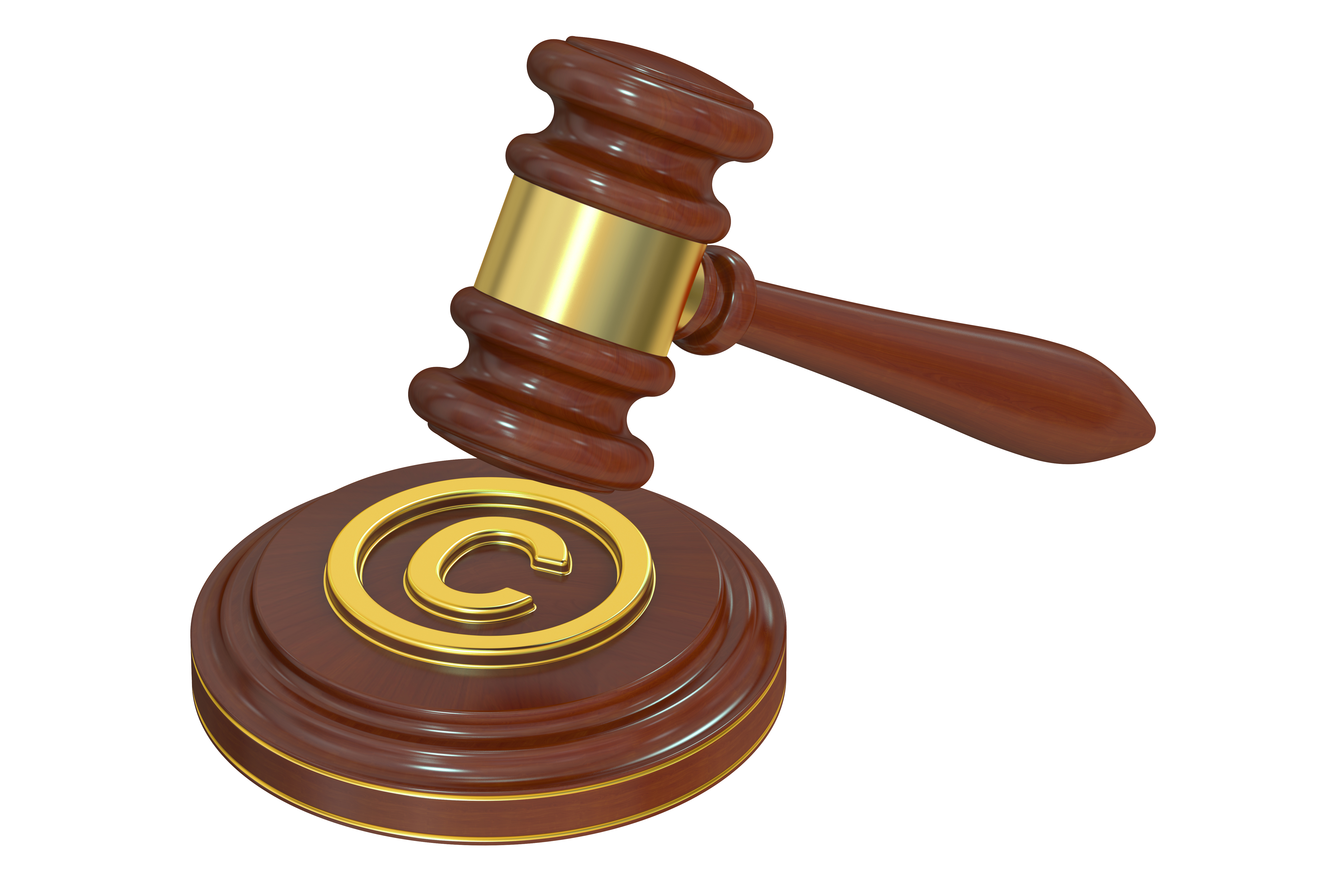“In the year since the Supreme Court decided Warhol v. Goldsmith… trial-level and appeals courts have grappled with applying the decision.”
 Courts have been busy with copyright cases in the first half of 2024. This article provides an overview of some of the key decisions issued in 2024, as well as important cases to watch in the remainder of the year.
Courts have been busy with copyright cases in the first half of 2024. This article provides an overview of some of the key decisions issued in 2024, as well as important cases to watch in the remainder of the year.
U.S. Supreme Court Resolves Circuit Split on Available Damages Under Discovery Rule
In Warner Chappell v. Nealy, 114 S.Ct. 1135 (2024), the U.S. Supreme Court addressed whether the Copyright Act’s three-year statute of limitations prevents plaintiffs from recovering damages that accrued more than three years prior to the commencement of an infringement suit, even in jurisdictions that apply the so-called “discovery rule.” Pursuant to the discovery rule, a claim is timely if brought within three years from the time the plaintiff discovered the infringement, irrespective of when the infringement occurred.
In adjudicating this question in Nealy, the Supreme Court assumed without deciding that the discovery rule was valid. It then held that “a copyright owner possessing a timely claim for infringement is entitled to damages, no matter when the infringement occurred.” Id. at 1139. Under this holding, a copyright owner with a timely infringement claim under the discovery rule may recover all damages from a timely infringement claim, even if the infringement occurred far more than three years prior to the filing of the lawsuit.
The dissent argued that the petition in Nealy was improvidently granted, as the Court should have awaited another petition addressing whether the discovery rule is permissible under the Copyright Act. Id. at 1141. Such a petition was presented in Hearst Newspapers, LLC v. Martinelli, but shortly after issuing its decision in Nealy, the Court denied cert in Martinelli, leaving unanswered the question of whether the Copyright Act’s three-year statute of limitations bars the discovery rule. Case No. 23-474, 2024 WL 2262332 (May 20, 2024).
Fair Use Cases After Warhol
In the year since the Supreme Court decided Warhol v. Goldsmith, 598 U.S. 508 (2023), trial-level and appeals courts have grappled with applying the decision.
Sedlik v. von Drachenberg concerned whether a tattoo made by well-known tattoo artist Katherine von Drachenberg p/k/a Kat von D, based on the plaintiff’s photograph of Miles Davis, infringed that photograph. The case went to a jury, which ruled that Kat von D’s tattoo was not infringing because it was not substantially similar to the plaintiff’s Miles Davis portrait; the jury, therefore, did not reach the question of whether the tattoo itself was fair use. Case No. 2:21-cv-01102 (C.D. Cal.), Jan. 26, 2024. The jury did find that Kat von D’s social media posts featuring the tattoo were protected by fair use. On May 22, 2024, Sedlik filed his notice of appeal to the Ninth Circuit. Id., Dkt. 252. Briefing will begin in August. Id., Dkt. 254.
Whyte Monkee Prods., LLC v. Netflix, 97 F.4th 699 (10th Cir. 2024), involved Netflix’s docuseries Tiger King, and specifically its subject, Joseph Maldonado-Passage, known as Joe Exotic. The fair use dispute centered around a video featuring the funeral of Joe Exotic’s late husband. The lower court granted summary judgment to Netflix. On appeal to the Tenth Circuit, the plaintiffs argued that the intervening Warhol decision warranted reversal of the lower court’s finding of fair use.
The Tenth Circuit agreed. In particular, the Tenth Circuit relied on the Warhol court’s statement that its earlier decision in Campbell v. Acuff-Rose Music, Inc. should not be interpreted to mean that any use that “adds some new expression, meaning, or message” weighs in favor of fair use under the first factor. Id. at 712. Thus, the Tenth Circuit found that even though Netflix had a different purpose from the original videographer (providing a historical reference point in Mr. Exotic’s life and commenting on his showmanship, as opposed to documenting occurrences in the park), that was insufficient to tilt the first factor in Netflix’s favor where the use did not involve a commentary on the original work itself. Id. at 715. Further, the court held Netflix’s use to be commercial because it profited from its streaming of the Tiger King series, and such commercial use further weighed against fair use. Id. With regard to the fourth factor, the dearth of evidence about market harm in the record – where the burden was on the defendant as the proponent of the affirmative defense to come forward with “favorable evidence about relevant markets,” id. at 720-21 – precluded it from sustaining the fair use determination for Netflix. It remanded to the district court for, among other things, further fact finding on the fourth factor. Id. at 723.
On May 13, 2024, however, the Tenth Circuit vacated its earlier decision and granted an en banc panel rehearing. It was “particularly interested in the impact of the filed opinion on the law and practice of documentary filmmaking,” and propounded three specific questions on that topic for supplemental briefing due June 3, including regarding the application of fair use jurisprudence to the use of film clips in documentaries. 101 F.4th 787, 787 (10th Cir. 2024). Oral argument has been scheduled for July 10.
Comparing two recent fair use cases involving the unauthorized use of photographs in connection with online news websites is also instructive. In Philpot v. Independent Journal Review, 92 F.4th 252 (4th Cir. 2024), the plaintiff, a photographer, brought suit against the news website Independent Journal Review (“IJR”) for its unauthorized use of his photograph of musician Ted Nugent. The photo was used in connection with an online article entitled “15 Signs Your Daddy Was a Conservative,” which included a reference to Mr. Nugent. The court found IJR’s use was not transformative as Philpot and IJR had the same purpose, namely, to depict the musician, and IJR did not alter the photograph other than cropping the negative space. Id. at 258-59.
The court further found the use to be commercial because IJR stood to gain advertising revenue from clicks on the article (despite the fact that the article was not, in fact, profitable for IJR). Id. at 260. The second and third factors weighed in favor of Philpot, as the portrait was artistic and IJR merely cropped it somewhat. The fourth factor weighed in favor of Philpot, notwithstanding the fact that the photograph at issue was available for free in exchange for proper attribution (which IJR did not provide). The court nevertheless determined IJR’s conduct would harm the plaintiff’s market were it to become widespread because Philpot typically licenses his photographs to media outlets like IJR for thousands of dollars. Id. at 262. In sum, the Fourth Circuit found all four factors weighed against fair use and reversed the lower court’s finding of fair use for the defendant.
In August Image, LLC v. Girard Entertainment & Media, LLC, photographer Mark Seliger and his agency brought suit based on the defendants’ publication of an article depicting an Instagram post that featured a photograph of the cast of Friends taken by Seliger. Case No. 23-cv-1492, 2024 WL 1375480, at *1 (S.D.N.Y. April 1, 2024). The Instagram post, made by Friends cast member David Schwimmer with the caption “It’s happening[],” was published on the website thenyindependent.com in connection with an article titled, “Can Friends Reboot Count on Aging Fans to Rekindle Love of TV Show?” On the first factor, the court held that “publishing a copyrighted photograph included in a social media post is transformative when the purpose is to report or comment on the post, which is itself the subject of the story.” Id. at *4. With regard to commerciality, the court found revenue from the use of the post to be minimal and that “[a]ny indirect financial gain is outweighed by the public benefit in reporting on matters of public interest.” Id. It discounted the significance of the second and third factors in light of the transformative nature of the use and the fact that the entire photograph was required in order to illustrate the story effectively. Id. at *5. The court also made short work of the fourth factor, citing Campbell for the proposition that the more transformative the use, the less likely the copy will serve as a substitute for the original. It further found that because the article used an Instagram post rather than the photograph, it was not in competition with the photograph. Id. at *5-6. In sum, on very similar facts to Philpot, the Southern District of New York court reached the opposite conclusion on fair use. August Image is currently on appeal to the Second Circuit.
AI Lawsuits to Watch
In Andersen v. Stability AI, Inc., 3:23-cv-00201 (N.D. Cal.), on May 8, 2024, the court held a hearing on the defendants’ motions to dismiss the plaintiffs’ first amended complaint. As was widely reported last fall, the court largely dismissed the original complaint, aside from the plaintiffs’ core claim based on unauthorized reproduction for training their AI model. Id., Dkt. No. 117. The plaintiffs’ first amended complaint, among other things, swapped their initially pled vicarious infringement claim for an inducement of copyright infringement claim, and traded the initially pled right of publicity claim in favor of a Lanham Act false endorsement claim. Id., Dkt. No. 129. The defendants again moved to dismiss.
On May 7, 2024, Judge Orrick issued a tentative ruling stating he was inclined to permit the plaintiffs to proceed to discovery on their direct and induced infringement claims under the Copyright Act, noting the plaintiffs plausibly alleged facts suggesting that the identified versions of Stable Diffusion contained compressed copies of the plaintiffs’ works. He was inclined to deny dismissal of plaintiffs’ false endorsement and trade dress claims under the Lanham Act, but to again grant dismissal of plaintiffs’ DMCA, breach of contract, and unjust enrichment claims, albeit with leave to file a Second Amended Complaint. The court held oral argument the following day but has yet to issue its final decision as of the time of this writing.
This case continues to test whether claims other than those for direct copyright infringement based on training data may survive a motion to dismiss. To date, such claims have been largely unsuccessful. For instance, on February 12, 2024, the district court for the Northern District of California largely granted OpenAI’s motion to dismiss all claims brought by plaintiffs, a putative class of authors, except the one alleging direct copyright infringement. The court dismissed the vicarious infringement claim (based on the plaintiffs’ failure to allege substantial similarity between the outputs generated by ChatGPT and plaintiffs’ works), as well as the DMCA claims, with leave to amend (it permitted a portion of the unfair competition claim to proceed). Tremblay, et al. v. OpenAI, Inc., et al., Case No. 3:23-cv-03416 (N.D. Cal.), Dkt. No. 68.
In the meantime, lawsuits against AI platforms continue to be filed. For instance, two additional class action lawsuits were filed by two different sets of authors on May 2, 2024, in the Northern District of California. One was filed against NVIDIA based upon its alleged unauthorized use of the authors’ works in training its series of large language models (LLM) called NeMo Megatron-GPT. Debus, et al. v. NVIDIA Corp., Case No. 4:24-cv-02655 (N.D. Cal.). The other was filed against Databricks and MosaicML based upon their alleged unauthorized use of the authors’ works in training MosaicML’s LLM, MosaicML Pretrained Transformer (“MPT”), which is distributed by Databricks. Makkai et al. v. Databricks, Inc., et al., Case No. 3:24-cv-02653 (N.D. Cal.).
Finally, in terms of cases to watch, Thomson Reuters Enterprise Centre GmbH v. ROSS Intelligence Inc., 1:20-cv-00613 (D. Del.), brought in May 2020, is one of the first AI-related infringement cases to be filed. The court denied summary judgment in September of last year, in part on the grounds that, among other things, a determination on fair use would have to be decided by a jury. Id., Dkt. Nos. 547-48. This will be the first trial concerning whether the use of copyrighted data to train an AI program is fair use. The trial is scheduled to begin in August 2024. Id., Dkt. No. 581.










